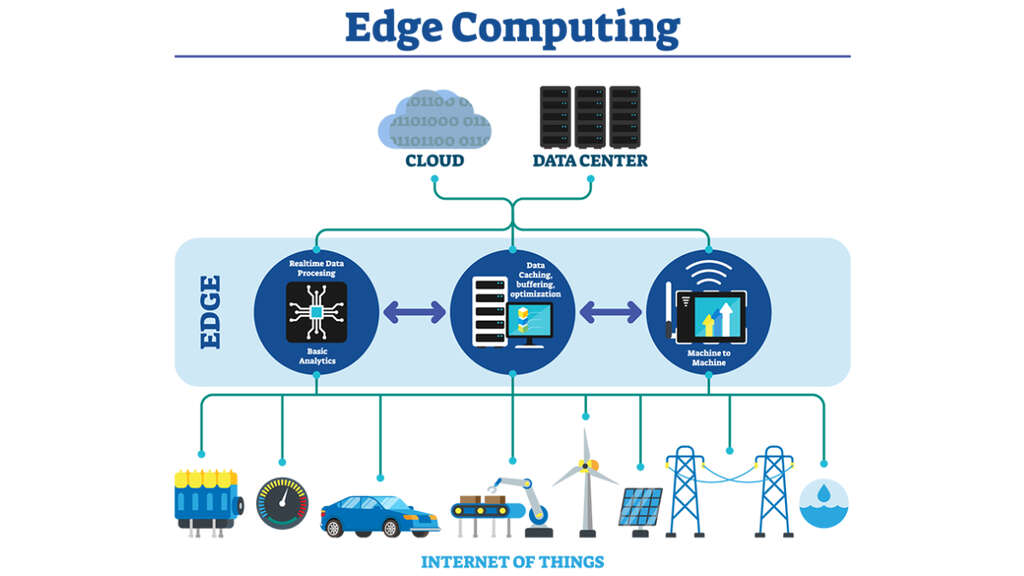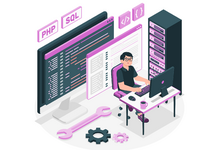Edge Computing redefines the IoT, improving efficiency, security, and scalability through local data processing, addressing latency and bandwidth challenges.
The current software development solutions landscape is witnessing a significant transformation driven by two of the most disruptive trends: the Internet of Things (IoT) and Edge Computing. This synergy is redefining network architectures, data management, and business operations, setting the stage for a new era of efficiency, agility, and connectivity. As companies seek to unlock the potential of this combination, it is crucial to understand the impact of edge computing on the IoT and how it can be leveraged to drive innovation and competitive advantage in an increasingly digitized market.
The IoT has seen exponential growth, connecting billions of devices around the world, from industrial sensors to consumer devices. This vast network of devices generates a huge amount of data that needs to be processed, analyzed, and, in many cases, acted upon in real time. This is where Edge Computing comes into play, offering a solution to process data close to the source, reducing latency, optimizing bandwidth, and improving data security.

Transformation of Data Processing and Latency
Edge computing transforms the traditional data processing paradigm by bringing computing capacity closer to the edge of the network, that is, close to where the data is generated. This approach solves one of the most significant challenges of the IoT: latency. In critical applications, such as autonomous vehicles or real-time health monitoring systems, reduced latency is crucial for performance and safety. By processing data locally, Edge Computing enables near-instant decisions, eliminating delays that could compromise system functionality or user security.
Bandwidth and Cost Optimization
Another significant benefit of edge computing is its ability to optimize bandwidth usage, which is especially relevant given the growing number of IoT devices and the volume of data they generate. By processing and analyzing data locally, only the relevant information needs to be sent to the cloud or data center, significantly reducing network traffic and therefore the costs associated with data transmission. This optimization by software development consulting firms not only improves efficiency but can also result in significant savings for businesses, especially those operating large IoT deployments.
Improving Data Security and Privacy
Data security and privacy are primary concerns in the software development services sector such as the IoT ecosystem, given the sensitive nature of the data collected and the potential for security breaches. Edge computing offers an additional layer of security by allowing data to be processed locally, minimizing the amount of information that needs to be sent over the network. This approach not only reduces the attack surface but also allows for the implementation of more robust security protocols on the device or edge node, strengthening data protection.
Enabling New Applications and Services
The combination of IoT and Edge Computing is enabling a new wave of applications and services that were previously unviable due to latency and bandwidth limitations. From smart cities to industrial automation, edge processing is enabling smarter, more reactive solutions. For example, in the context of smart cities, edge computing can facilitate real-time analysis of traffic to optimize vehicle flows, or in manufacturing, it can enable real-time fault detection systems that minimize downtime. and maximize production.
Challenges and Considerations in Integrating Edge Computing into IoT
The integration of Edge Computing into IoT systems presents a number of technical challenges and strategic considerations. One of the main challenges is managing the vast amount of data generated by IoT devices. Unlike centralized models, where data is transmitted to the cloud for processing and analysis, Edge Computing proposes a decentralized approach. This means that data is processed locally on or near the device, reducing latency and bandwidth consumption but, in turn, posing challenges in terms of data storage, processing, and security at the edge. of the network.
Another significant challenge is the heterogeneity of IoT devices, which vary greatly in their computing, storage, and power capabilities. Designing Edge Computing solutions that are flexible and adaptable to a wide range of devices is essential for successful integration. This requires a modular approach and open standards that facilitate interoperability between different Edge Computing devices and platforms.
Security is a critical consideration in any IoT system, and edge computing introduces additional complexities in this area. Processing data locally expands the attack surface, requiring robust security measures at each edge node. This includes device authentication and authorization, encryption of data in place and in transit, and implementation of consistent security policies across the entire IoT architecture.
Advances Driven by Edge Computing in IoT
Despite these challenges, edge computing is enabling significant advances in the world of IoT, offering innovative solutions that address issues of latency, bandwidth, and energy efficiency. For example, in the manufacturing sector, Edge Computing enables real-time processing of sensor data on the production line, facilitating early detection of failures and optimization of manufacturing processes. This not only improves operational efficiency but also reduces maintenance costs and increases the life of the machinery.
In the field of smart cities, Edge Computing plays a crucial role in traffic management and public transportation systems. By processing traffic data in real-time close to its origin, it is possible to optimize traffic lights and transport routes, significantly improving urban mobility and reducing congestion. Additionally, the ability to process and analyze data locally makes it easier to implement privacy-friendly smart surveillance systems, as sensitive data can be processed and filtered at the edge without needing to be sent to the cloud.
The adoption of Edge Computing in the healthcare sector offers the potential to revolutionize healthcare, enabling remote patient monitoring and telehealth. IoT devices equipped with Edge Computing capabilities can monitor vital signs in real time, alerting healthcare professionals to any anomalies without delay. This improves the quality of care and allows for early intervention before health problems become critical.
Edge computing is ushering in a new era in IoT development, effectively addressing latency, bandwidth, and data processing challenges. Through its ability to process data locally, it offers significant improvements in terms of efficiency, security, and scalability. However, successfully integrating Edge Computing into IoT requires careful consideration of technical and strategic challenges, including data management, device interoperability, and security. As we move forward, the software development solutions community must collaborate on the development of open standards and modular solutions that facilitate the widespread adoption of Edge Computing, unlocking its full potential to transform the IoT and, by extension, our society and our environment.






